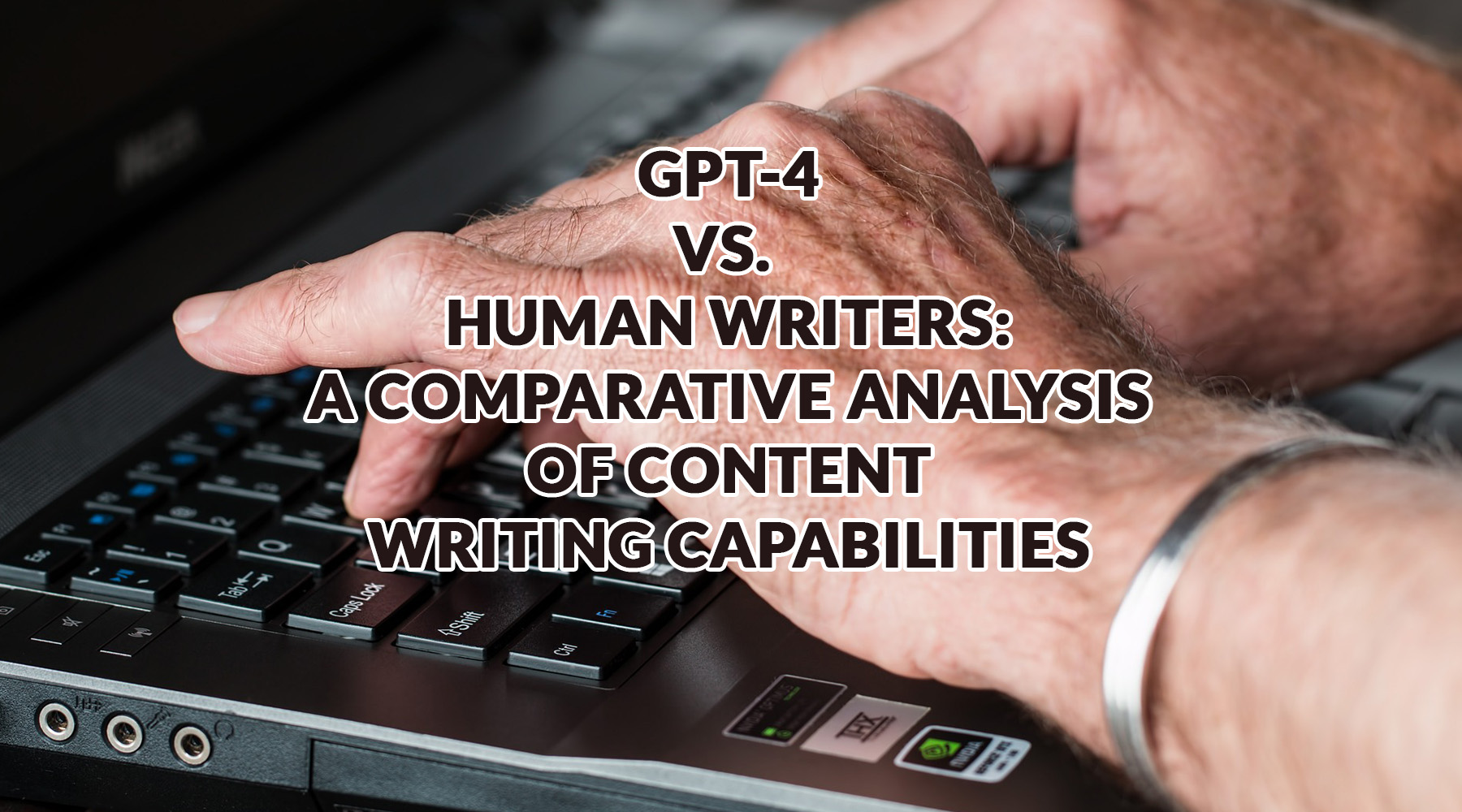
In today’s fast-paced digital world, it’s no secret that the demand for high-quality content is ever-growing. As a result, we’ve been constantly seeking ways to improve our writing skills and produce captivating articles that keep readers hooked from start to finish. But what if there was another contender in this race to create engaging content? Enter GPT-4, an advanced AI language model that has gained significant attention as a potential game-changer in the field of content writing. It begs the question: can human writers stand their ground against this cutting-edge technology, or will they be left behind in its wake?
You might have heard about GPT-3’s impressive capabilities and wondered how much further AI-driven models could evolve. Well, buckle up because GPT-4 is here to blow your mind! In this article, we’ll delve deep into the fascinating world of artificial intelligence by comparing GPT-4 with human writers when it comes to crafting compelling content. If you’re eager to unlock the secrets of mastering written communication or simply curious about where AI may lead us next in the realm of creative expression, then stay tuned – we guarantee you’ll find some valuable insights throughout this intriguing journey.
Understanding GPT-4: The Latest Advancements In Ai Content Writing
If you have been following the world of artificial intelligence, then you must be aware of the incredible progress being made in content writing capabilities. One such groundbreaking development is GPT-4, a cutting-edge language model that has taken the industry by storm. As an aspiring master of your craft or simply someone interested in understanding how this technology compares to human writers, buckle up for a fascinating comparative analysis.
As opposed to traditional freelance content writer techniques that heavily rely on individual expertise and creativity, GPT-4 leverages advanced algorithms to generate captivating and relevant content across various domains. Its ability to understand context and semantics allows it to create top-notch material with minimal input from users. This not only makes it a formidable contender in the field but also raises questions about its impact on human writers’ careers.
However impressive GPT-4’s accomplishments may seem, it is essential to acknowledge that this technology does not exist in isolation; instead, it stands upon the shoulders of previous iterations like GPT-3, which laid the foundation for current breakthroughs. Each generation brought forth refinement and sophistication, pushing boundaries further than ever before. With advancements happening at breakneck speed, one can only imagine what future iterations will bring – perhaps even more astonishing content-writing feats are right around the corner.
Despite these extraordinary achievements by GPT-4, we cannot overlook certain nuances exclusive to human craftsmanship when discussing creative work. In our next section, titled “The Human Touch: The Unique Strengths of Human Writers in Content Creation,” we explore why humans still maintain an edge over their AI counterparts and uncover areas where both can collaborate harmoniously for optimum results.
The Human Touch: The Unique Strengths Of Human Writers In Content Creation
When it comes to content creation, there’s no denying the innate ability of human writers to weave stories that captivate and inspire audiences. With years of experience, practice, and continuous learning, skilled writers possess a deep understanding of language nuances and can adapt their writing style accordingly. This level of mastery enables them to create highly engaging content that resonates with readers on an emotional level.
Human writers are also exceptional at incorporating empathy and personal experiences into their work. By drawing from real-life situations, they can craft relatable narratives that strike a chord with readers. These genuine connections not only help build trust between brands and consumers but also foster loyalty among customers who feel seen and understood by the organization behind the content.
Furthermore, humans have an uncanny knack for identifying cultural references or current trends that AI-driven tools like GPT-4 might miss. Tapping into these zeitgeist moments allows human writers to generate fresh ideas that align with popular topics while remaining authentic to their unique voices. Additionally, this keen awareness ensures that any potentially controversial material is handled with sensitivity and tact—an essential skill when navigating today’s digital landscape.
As we acknowledge the remarkable capabilities of human writers in crafting compelling content, it becomes apparent just how vital their role remains within the industry despite technological advancements. It would be wise for businesses not to lose sight of this as they continue leveraging cutting-edge solutions like GPT-4 in their content strategies. Let’s now move forward to examine key metrics such as quality, speed, and consistency—providing insight into how humans fare against artificial intelligence systems in various aspects of content creation.
Analyzing Key Metrics: Comparing GPT-4 And Human Writers On Quality, Speed, And Consistency
Having delved into the unique strengths of human writers, it’s essential to shift our focus to quantitative analysis. By examining key metrics such as quality, speed, and consistency, we can draw valuable insights into how GPT-4 and human writers compare in content creation.
Quality is an indispensable aspect of content writing that has far-reaching implications on user engagement and satisfaction. While GPT-4 demonstrates impressively accurate grammar and syntax usage, its semantic understanding sometimes falls short when compared to humans. Human writers possess innate comprehension abilities that allow them to craft meaningful sentences with precision while maintaining coherence throughout their work. On the other hand, AI-generated texts may occasionally lose context or produce irrelevant information due to limitations in machine learning algorithms.
Another crucial factor for comparison between AI-driven models like GPT-4 and human authors is speed. The ability of machines to generate vast amounts of text within seconds gives them a competitive edge over their human counterparts, who might take hours or even days depending upon the complexity of the topic at hand. However, this advantage comes with potential trade-offs; faster generation times may result in superficial articles lacking depth or critical analysis which are vital components for captivating readers seeking mastery.
Consistency plays a significant role in ensuring seamless flow and cohesion across written pieces. In terms of adhering to stylistic guidelines or tone, GPT-4 shows remarkable proficiency but struggles with maintaining subject matter relevance consistently throughout longer texts. This inconsistency highlights an area where human writers still have the upper hand – they intuitively understand overarching themes better than AI systems do currently.
As we progress through this comparative study, let us explore the role of creativity and originality in content writing by contrasting GPT-4’s capabilities against those of skilled human writers.
The Role Of Creativity And Originality In Content Writing: GPT-4 Vs. Human Writers
Picture this: an epic battle between the creative minds of human writers and the swift, data-driven capabilities of GPT-4. In the realm of content writing, creativity, and originality reign supreme – but how do these factors play out when comparing AI-generated text with that crafted by humans? Let’s delve into this fascinating contest.
The beauty of human-authored content lies in our innate ability to draw from personal experiences, emotions, and cultural contexts. Our unique perspectives enable us to weave engaging narratives that resonate deeply with readers. Human writers possess a nuanced understanding of language subtleties and can produce thought-provoking pieces that foster connection and inspire action. This level of creativity is difficult for any AI model to replicate fully.
GPT-4, on the other hand, has access to vast amounts of information at lightning-fast speeds. Its advanced algorithm enables it to generate well-structured sentences that often make logical sense. However, while GPT-4 can mimic various writing styles based on its training data, it may struggle to consistently deliver truly innovative ideas or capture the essence of what makes a piece genuinely compelling. As such, there remains a divide between the depth offered by human-written content and AI-generated text.
That being said, one cannot overlook the potential benefits brought forth by incorporating AI systems like GPT-4 into content production processes. By harnessing both human ingenuity and machine efficiency together, we open up new avenues for creating outstanding material that captivates audiences’ subconscious desire for mastery. With this winning combination in mind, let’s explore how best to strike the perfect balance between these two powerful forces in content creation.
Striking The Right Balance: Integrating GPT-4 And Human Writers For Optimal Content Production
Delving deeper into the world of content creation, it becomes apparent that both GPT-4 and human writers offer unique advantages. How, then, can we harness the strengths of each to achieve optimal results in our content production process? The answer lies in striking a harmonious balance between these two powerful forces – integrating AI capabilities with human ingenuity for an unparalleled outcome.
To begin with, utilizing GPT-4 as a starting point for content generation is an excellent strategy. Allowing this advanced AI model to generate ideas or produce rough drafts based on desired topics saves considerable time and resources that would otherwise be spent on brainstorming sessions or relying solely on individual creativity. Additionally, GPT-4’s ability to analyze vast amounts of data and identify patterns can provide valuable insights into current trends and popular search terms, allowing businesses to stay ahead of their competition.
Once the initial groundwork has been laid by GPT-4, human writers should step in to fine-tune the generated content. By incorporating personal experiences, anecdotes, and emotions into the narrative, they will enrich the material while ensuring its originality remains intact. This not only makes the piece more engaging for readers but also guarantees it aligns with brand identity and messaging guidelines. Furthermore, as humans possess innate language skills that surpass even the most sophisticated AI models like GPT-4, they are better equipped to correct subtle linguistic errors and ensure overall coherence within the text.
The synergy created when combining GPT-4’s efficiency and data-driven insights with human writers’ creativity, and emotional intelligence cannot be understated. It paves the way for producing high-quality content at scale while maintaining cost-effectiveness – satisfying both business needs and audiences’ subconscious desire for mastery over subject matter through thought-provoking articles crafted by expert wordsmiths aided by cutting-edge technology. Together, these innovative approaches mark a new era in digital content production where stakeholders embrace collaboration instead of competition, ultimately benefiting readers and businesses alike.
Conclusion
In conclusion, it’s clear that both GPT-4 and human writers have their respective strengths in content creation. While GPT-4 may excel in speed and consistency, we can’t overlook the creativity and originality that human writers bring to the table.
Ultimately, finding the right balance between AI-generated content and human writing is crucial for producing high-quality output. By integrating GPT-4 with the skills of talented human writers, we’re sure to achieve optimal results in our content production endeavors.



